Sales organizations have invested heavily in CRM solutions like Salesforce Sales Cloud in the last 10 years.
Can my Salesforce Org be used to manage our incentive compensation?
It is not uncommon for smaller sales organizations (eg. 30 salespeople) to invest six-figure dollar amounts in the implementation phase. Annual commitments more than $1,000 per seat are also common.
So, when they look at their sales commission program, an obvious question to ask is: can I manage my sales compensation plan in my CRM? Logically, the CRM contains all the data you need on your salespeople as well as sales and activity information. Therefore, would it not make sense to manage your commission processes in this one place – ie. avoid setting up integrations with a separate sales commission software product?
Unfortunately, No
Unfortunately, the answer is usually a “No”. This is usually the case even for small teams with very simple incentive compensation plans.
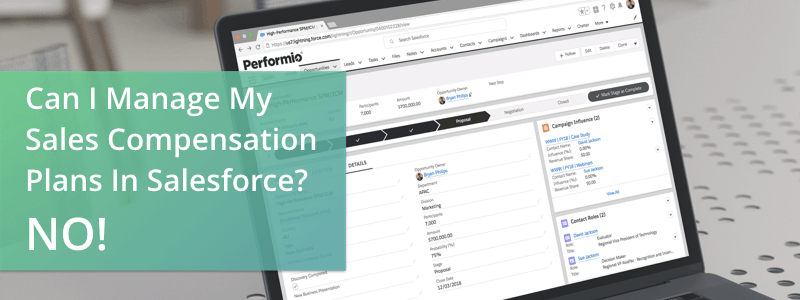
The reason? Poor product fit. There are various 'jobs to be done' to effectively manage a sales compensation plan. And nearly all of these jobs require significant customization work if you are going to DIY commissions on your CRM or salesforce cloud.
Why a CRM Can’t Manage Sales Commission
The following list of "jobs to be done" is not comprehensive but provides a good scope of the requirements that a dedicated Sales Performannce Management product will solve for. Your Salesforce cloud instance will not able to meet most of these requirements - in most cases, a large scale customization will be required to automate the “job to be done”.
Salesforce will allow you to set up custom fields, calculate formulas and configure some dashboards and reports. But that won't allow you to manage commissions except for the most simple cases. Anything more and you will need a full Salesforce development team. And while they may be able to build your custom commission solution there will be years of ongoing development. Custom development on any platform is always much more complicated than originally envisioned. It almost always fails to deliver crucial functionality because the platform is not fit for purpose. You are building a new product from the ground up. Established software vendors like Performio have developed their product to handle a myriad of customer use cases across many industries.

Unfortunately, executive-level decision makers sometimes don’t see the depth of processes that need to be automated by sales commission software. The rest of this article goes into detail on all the specialized “jobs to be done” by an enterprise ICM.
In summary, these jobs to be done are:
- Capturing & Organizing Data
- Managing Sales Crediting Rules & Rollup
- Managing Hierarchies & Territories
- Managing Quotas & Targets
- Keeping All Participants Up-To-Date
- Managing All Plan Rules, Calculations, and Formulas
- Validating Calculations & Reconciling Data
- Handling Exceptions
- Modeling Changes To The Plan
- Entering Payments Into Payroll System
- Maintaining Payroll Data
- Providing Forecasts
- Providing Reports
- Getting Approvals
- Securing Access To The Data
Capturing and Organizing Data
Your Salesforce Sales Cloud is not likely to have ALL the data needed for commissions. For example, you might need to source invoicing data from SAP, NetSuite or some other ERP / accounting system. Order details might need to come from your provisioning system. There might be HR specific data that can only be found in the HRIS. A good commission product like Performio has been built to capture any number of data feeds from different sources. There might be a corporate project to bring all this data into your salesforce cloud instance. But, it might be a long way away and you still may not get the data you need when it does arrive.
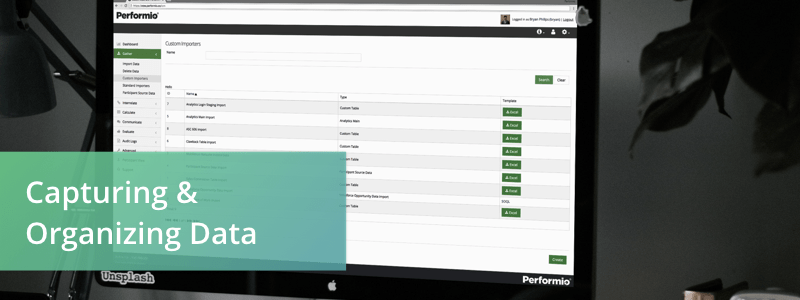
Managing Sales Crediting Rules
Often the most challenging part of running a commission program is the business of accurately calculating performance and attributing sales to the correct people. The commission calculation can be straight-forward in comparison. Salesforce cloud is good at handling custom fields (eg “salesperson 2”) but you’ll be building a lot of customizations if you try to integrate all the business logic.
A good commission product (and this is an area where Performio shines especially) will have built-in data ‘transformation’ capabilities to handle whatever business logic gets thrown at it.
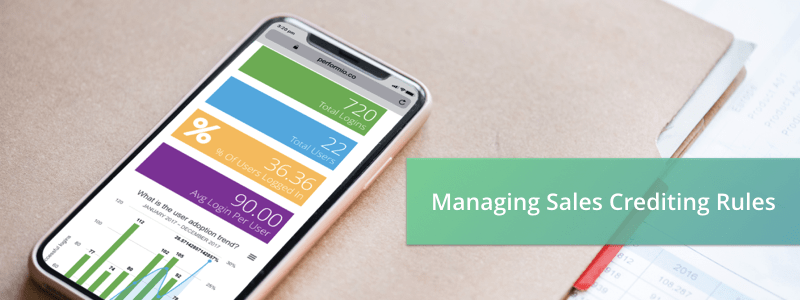
Managing Hierarchies & Territories
Furthermore, sales performance often needs to be rolled up through a management hierarchy. This may not be as simple as a management structure either. It could be multi-tiered with special branches. You might also have special pooling or crediting rules for specialist roles.
And then you have territory allocation rules for tracking sales. Managing year on year data and changes to the hierarchy will likely get problematic for a CRM. A commission product should handle this ‘out of the box’ - or at least with a minimal degree of configuration.

Managing Quotas & Target
Sales targets need to be tracked annually / monthly / quarterly. This introduces the whole concept of periodicity that isn’t easily managed in a CRM. Furthermore, there may be special business logic applying to how targets should be calculated based on territory allocations or FTE equivalent etc.

Keeping All Participants Up-To-Date
This is one area where your CRM should shine. Keeping participants up to date is not an issue if Salesforce is the source of truth for all salespersons’ details. The only gap is that there are typically a number of attributes that are unique to the sales compensation plan. These can be handled with custom fields - but of course, custom fields will require customization work to integrate these fields into a cohesive solution for sales compensation.
For example, one attribute is start and end dates for periods of guarantee. Custom fields could take care of this - but what about handling the logic for various use cases for the calculation of pay and performance during (and after) periods of guarantee?

Managing All Plan Rules, Calculations, and Formulas
Note that when “commissions” is raised as a business process or IT requirement - the tendency is to think of a “calculation engine to handle the calculations. This is obviously very important - but it is just one of fourteen jobs to be done to provide a fully functional solution. There is also a tendency to underestimate the degree of complexity. Commission calculations are typically not very complicated - but it’s the way they need to work in harmony with all the other requirements that make this product feature set highly complex.

Validating Calculations & Reconciling Data
This is an oft-overlooked job to be done. The calculations have been tested to the nth degree. So the tendency is to think: what could go wrong? why can’t we just run the process and then go to payroll? The challenge is we are talking about people’s pay here. We can’t just expect it will be correct. We have to know it is correct.
The only way to know it is correct is to run a detailed process on the current month’s data. A good commission product will provide a range of reports for testing each step in your process - from the data that has been loaded, to the management of participant eligibility data, to the calculations and the final outputs.
A good commission product will also have a fit for purpose checklist management tool - so you can build out your own process checklist. A really good one becomes a user manual that anyone in your team can pick up so that you can take holidays at month end without worrying about what will happen to the commission payments!
Again, your salesforce cloud is not going to have these tools readily available - not without a lot of configuring and customizing.
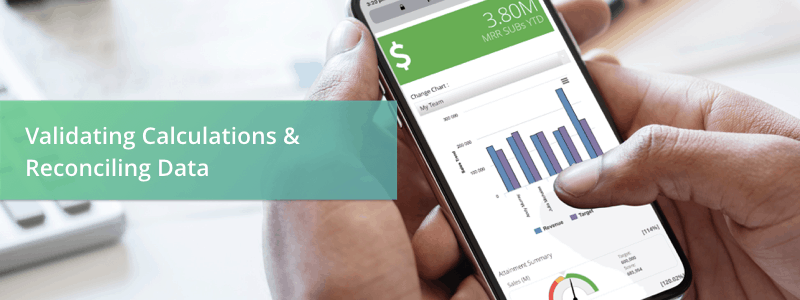
Handling Exceptions
Every sales team has them. It doesn’t matter how ‘best practice’ or globally consistent your policy if you are going to need to manage exceptions. It doesn’t matter how clean your data is, you are going to need to manage exceptions.
Exceptions can apply generally to your source data. For example, there are edge cases where you need to override what the ‘record of truth’. Or, there are exceptional circumstances that require a commission policy rule to be overridden or the rules for crediting sales result in an ‘unfair’ situation which needs to be overridden.
A good commission solution provides you with the ability to handle these exceptions cleanly. Most importantly, a good solution will record a clear audit trail to pass Sarbanes-Oxley Act Of 2002 (SOX) of compliance. Of course, a good solution will include an easy to use approvals process for these exceptions.
Once again, baking all this extra functionality in Salesforce isn’t going to be easy and it isn’t going to be cheap either.
Another benefit of keeping your commission solution separate from (but integrated to) your salesforce cloud instance is that the exceptions may be ‘ for commission only’ - you don’t want to be adjusting the ‘record of truth’ in the source.

Modelling Changes To The Plan
As the new year approaches, you need to be able to model the costs of potential changes to your plan. There is a tendency to dumb this down to simple “what-ifs” on simple changes to the plan variables, accelerator tiers, etc.
In practice, the modeling exercise is always far more complex and dynamic. Typically you will be asked to model the cost of plans changes along with changes to quotas and targets, sales assumptions, adding new salespeople, etc.
This is why Excel remains the tool of choice even for fortune 500 companies who have spent big on software promising sophisticated modeling and scenario planning. I think of this as ‘the wizard of oz’ modeling syndrome - but that’s a separate article for another day.
Regardless, a workable modeling solution will require a budget in the region of $1,000,000.
A better solution is for your commission product to provide a separate modeling environment. This environment should be a mirror image of your production environment. So you can run any type of scenario based on changes to targets, data, plan designs, crediting rules, etc.
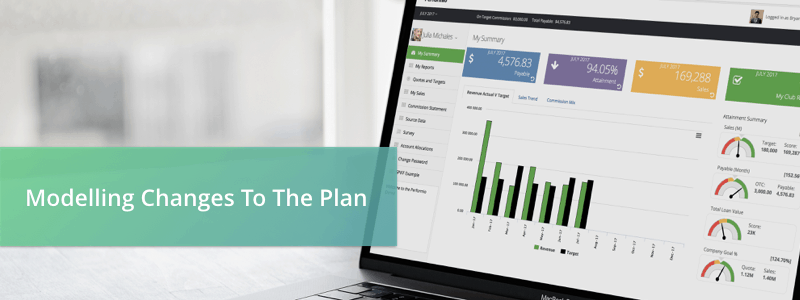
Entering Payments Into The Payroll System + Maintaining Payroll Data
This should be a relatively simple job. It should be simple for a commission product. For Salesforce you are going to need a reporting engine that can produce a data file in the format required by your payroll system. Again, it will depend on complexity, but this seemingly simple tasks can be a big challenge - especially when asked to incorporate custom fields, foreign currency conversions, reports per region, etc.
Furthermore, you need to know that your data is locked down AFTER you have processed the payments to payroll. This means that your payroll numbers and any related data are LOCKED down and can NEVER be adjusted again for that payment period.
Too often we see companies building bespoke solutions and bolt-ons that don’t properly cater for this. If you can’t LOCK your payroll payments you could be in for a lot of pain when someone in your team makes an inadvertent change to a prior period that has been paid. There’s no clean way to reconcile what happened and why people got paid what they got paid. The auditors don’t like this.
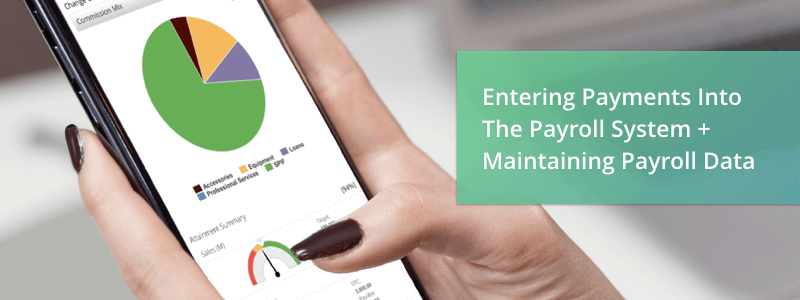
Providing Forecasts
Finance wants to know what the commission cost forecast for the year is. They will start asking this question as you approach the end of the year. Depending on the paranoia levels of your finance team, the end of the year may start approaching after the first payment period of the year.
So, you need a reliable way to forecast. You can’t just pro rata the payments out to 12 months. You need to factor in the plan mechanics in terms of qualifiers, hurdles, and accelerators. Finance might even ask for forecasts based on sales assumptions and/or current pipeline conversion scenarios and even resourcing scenarios (they should).
This is another area where a good commission product pays for itself because it has the data model, the calculation engine, and the reporting to support detailed forecasting. If you try to build a solution on your salesforce cloud, you are doing it all from scratch.
Note also that AI/machine learning is a new area that offers promise for fine-grained forecasting. Commission vendors are investing in this area. Watch this space.
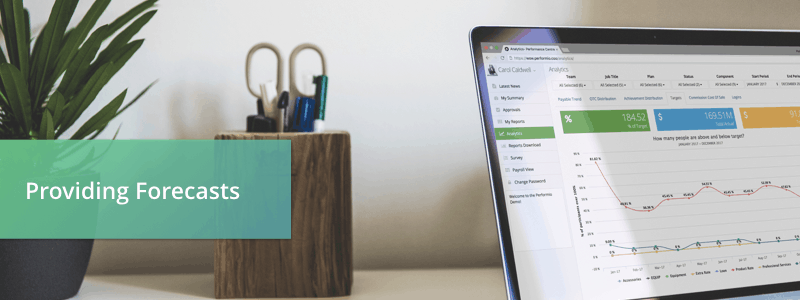
Providing Reports
Your sales performance and incentive compensation program requires more than a payroll report. You need to satisfy management who want to know how their expenditure is tracking relative to the top line. The commission budget is often the largest variable cost in the sales & marketing budget.
Salesforce cloud provides awesome report building and dashboard functionality. But it isn’t set up in a structure to handle the demands of sales compensation. Anyone who has tried building year on year and YTD reports for individual salespeople will understand the challenges here.

Getting Approvals
A best practice sales commission program will have approval processes baked into key workflows such as monthly commission statement sign off, quota sign off, plan sign off, commission record dispute resolutions, discretionary commission adjustments, and exception handling.
Most companies manage these processes via email. An awesome commission product will have an easy to use workflow management tool that can flexibly handle these different processes. Note the variety of processes to be handled. Do you really want to be building this all into your salesforce cloud instance? It’s a whole new ‘product’ that needs to be designed, built, tested and supported.
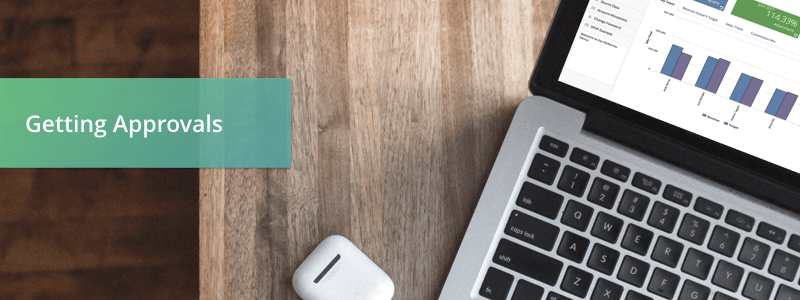
Securing Access To The Data
Sales compensation data typically traverses more than half of the entire data set of your sales workflow: from the initial lead generation to a commission ‘cheque’ to the salesperson. And that commission cheque needs to be transparent up and across the hierarchy for the sales manager, their manager, etc, finance, C-suite, etc. So there’s a lot of data that needs to be viewed simultaneously by different people in the organization with authorized access.
Access is to be based not on the user profile but their profile for a ‘period in time’ and their position in the hierarchy at that time. This is another area where you will struggle to meet requirements with your salesforce cloud. There is also the risk that configuration and customization efforts will make the solution more complex. This will have negative impacts on the user experience for many ‘non-sales commission program’ user stories.
So there it is. Why would you want to use software that isn’t fit for the purpose of managing your sales commission program?
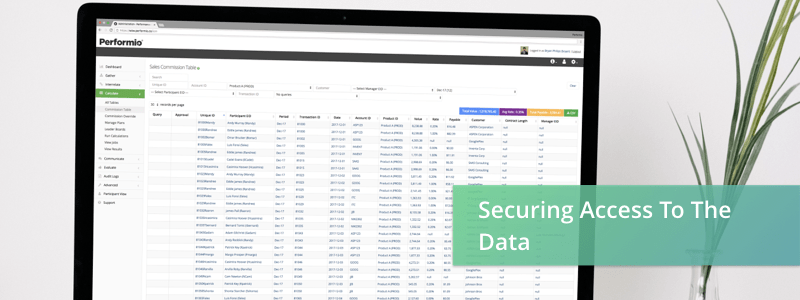
Salesforce Commission Tracking
This article is written from the perspective of a sales commission system software vendor. I acknowledge my bias. We are extensive users of Salesforce Sales Cloud.
A general problem I see in the sales commission software industry is that buyers often make the mistake of getting hung up on “ the pretty dashboard” and “the calculation engine” as though they are the only two feature sets that ICM vendors have to offer. Because, if you have a simple set of plan calculations and you already have cool dashboards in salesforce - why would you bother buying an ICM software?
>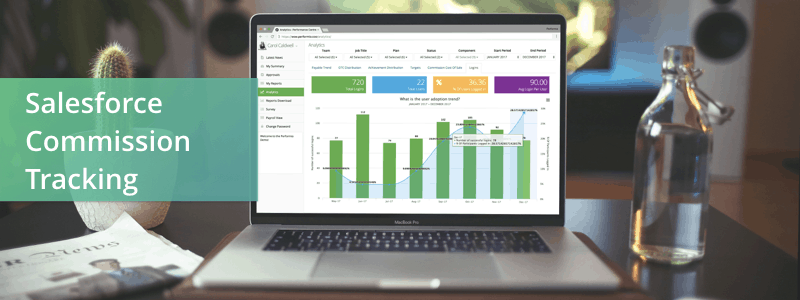
I am not saying Salesforce can’t handle your sales commission program. What I am advocating for here is that a professionally run program requires a high degree of competence across all of the “jobs to be done” that I have described.
My intention is to draw attention to the breadth, depth and unique domain of this scope of work. Therefore, a fit for purpose product is a better option in terms of:
- Speed of implementation
- Cost of implementation
- Ongoing support & maintenance costs
- Ongoing agility - ability to be updated to meet changing business needs
Of course, a good sales commission product will have built-in integrations with products like Salesforce Sales Cloud. Performio is such a product! For more information, click here
Tips On DIY Commission Solutions
It’s worth noting here the typical phases of bespoke build: The design phase is usually fun. The build phase - not so much. Testing turns the project into real pain and people are now looking for the exit doors. But it’s the support phase - if you get this far - where things really go pear-shaped. All the glamour and fun of building something fresh and new has long since dissipated. Those pesky salespeople won’t shut up about the bugs in your baby - they get quite personal and unreasonably upset about their pay. If only they knew how hard you worked on this new product! Your best bet is to find an exising SPM or ICM vendor that best meets your business' criteria.
